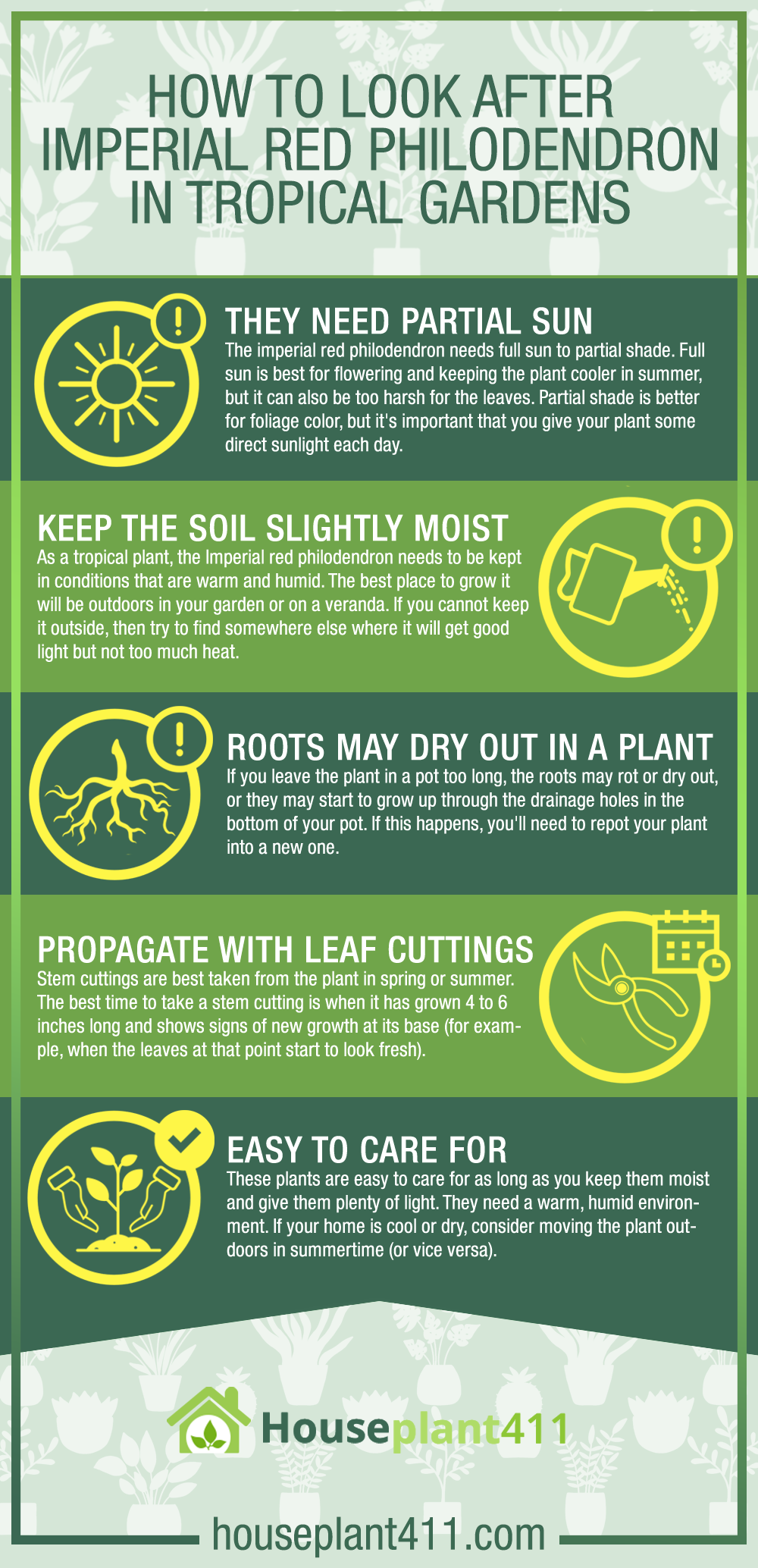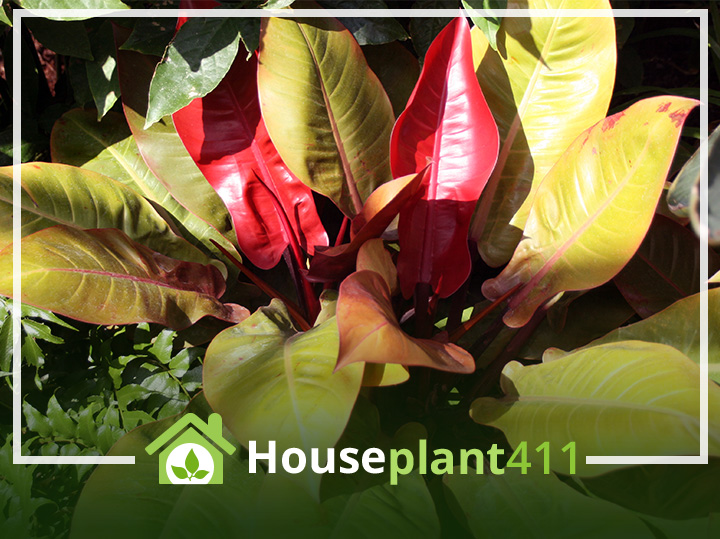The imperial red philodendron (Philodendron bipinnatifidum) is a popular houseplant because of its large leaves and purple-red color that changes to green with maturity. The imperial red philodendron needs full sun to partial shade and can be propagated by stem cuttings or leaf cuttings taken from new growth. You can also grow this tropical plant in pots or hanging baskets.
In this article, we take a look at imperial red philodendrons and study the role they play in tropical gardens. Stay with us to study their efficiency and contribution to your garden.
About the Imperial Red Philodendron
The Imperial Red Philodendron is a beautiful plant that has been known for its ability to purify the air. It is an excellent choice for those who are looking to add a little bit of green to their home or office.
The Imperial Red Philodendron has dark green leaves that are irregularly shaped. The edges of the leaves have red tips that add a beautiful contrast to the dark green coloration of the leaves themselves. The flowers of this plant are small and white, with red centers.
This plant is easy to care for and will thrive in bright indirect light but can also tolerate low light conditions. It needs plenty of water, so make sure you keep it well-hydrated at all times. You should also avoid over-fertilizing this plant because this can lead to root rot problems down the road, making it difficult to grow new plants from cuttings taken from old ones!
It’s important not only that you keep your Imperial Red Philodendron healthy but also clean air around where it lives so consider adding one if you’re looking for more ways to improve indoor air quality at home or work!
The plant is easy to care for, but you should take care not to overwater it or expose it to direct sunlight when it’s in bloom.
They Need Partial Sun
The imperial red philodendron needs full sun to partial shade. Full sun is best for flowering and keeping the plant cooler in summer, but it can also be too harsh for the leaves. Partial shade is better for foliage color, but it’s important that you give your plant some direct sunlight each day.
If you live in a warm climate, try to keep your plant in a spot where it gets no more than 4 hours of morning or afternoon sun each day (unless you’re lucky enough to have an east-facing window).
When growing the imperial red in pots, make sure that the pot is large enough for the plant to grow freely. The pot should be at least 15cm (6 inches) in diameter and 30cm (12 inches) deep. It should also have drainage holes so that excess water can flow out of it easily.
Keep the Soil Slightly Moist
As a tropical plant, the Imperial red philodendron needs to be kept in conditions that are warm and humid. The best place to grow it will be outdoors in your garden or on a veranda. If you cannot keep it outside, then try to find somewhere else where it will get good light but not too much heat.
The soil should always be slightly moist but not soggy. Be careful not to over-water this plant as its roots will rot if they stay wet for too long! Water regularly throughout the year, but don’t let the pot sit in water after watering; this can cause root rot and make it die quicker than expected!
If you live in an area with high temperatures, such as Australia’s Outback desert plains, where daytime temperatures often exceed 40C/104F degrees during summer months (December-February), consider keeping your Imperial red philodendron indoors during these times so that its leaves won’t scorch from direct sun exposure!
Roots May Dry Out in a Plant
If you leave the plant in a pot too long, the roots may rot or dry out, or they may start to grow up through the drainage holes in the bottom of your pot. If this happens, you’ll need to repot your plant into a new one.
This can happen if you don’t water your Imperial red philodendron regularly enough and make sure that it gets enough light (see below). You should also make sure that its root system stays healthy by watering it once every week or two during summer and less often during winter.
It’s also important not to let its soil become too wet; if you see water droplets on its leaves after watering, then either reduce how often you give it water or add more drainage holes to its pot so excess moisture can drain away easily.
Propagate with Leaf Cuttings
When propagating imperial red philodendrons, you can take stem and leaf cuttings.
Stem cuttings are best taken from the plant in spring or summer. The best time to take a stem cutting is when it has grown 4 to 6 inches long and shows signs of new growth at its base (for example, when the leaves at that point start to look fresh). Make sure your stem cutting is at least 6 inches long and leave 2 or 3 nodes on it before planting into the soil mix as described below.
Leaf cuttings can be taken from any time of year, but they do need to be longer than 2 inches in length. This will ensure enough material for rooting hormones and nutrients needed for survival after planting into soil mix.
Easy to Care For
These plants are easy to care for as long as you keep them moist and give them plenty of light. They need a warm, humid environment. If your home is cool or dry, consider moving the plant outdoors in summertime (or vice versa).
Water your imperial red philodendron from the base of its pot; don’t let excess water stand in it because this can cause root rot.
Give your plant bright indirect light or bright filtered sun when possible; avoid direct sunlight except on cloudy days when temperatures are moderate (65 degrees F or above).

Conclusion
The imperial red philodendron is a popular houseplant because of its large leaves and purple-red color that changes to green with maturity. We hope the information in this article gives you the direction and care tips you need.

